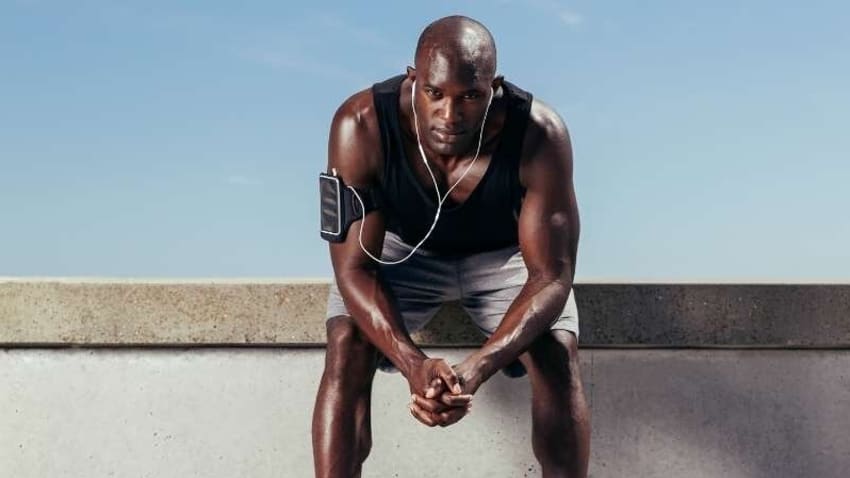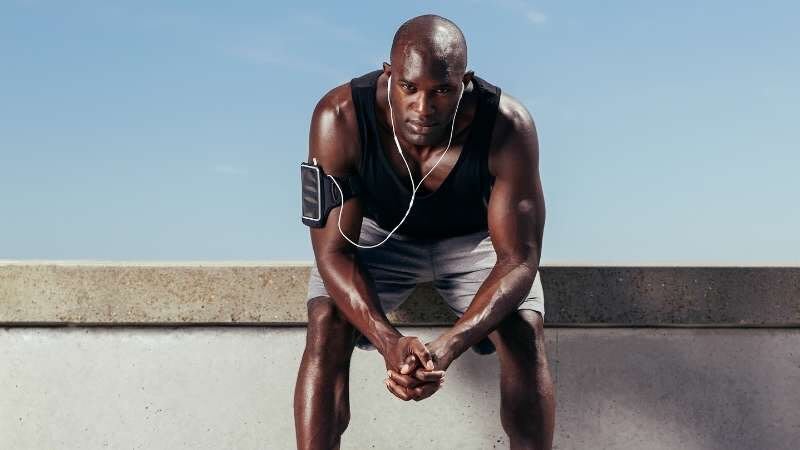

There are so many things to enjoy about the Summer - poolside Saturdays, longer days and the smell of sunscreen. However, running in the blistering heat can be far less enjoyable. At temperatures above 30 degrees Celsius your body temperature starts to rise. Your body responds by increasing sweat production, heart rate, and your blood vessels also start to dilate in order to pump blood faster. At high temperatures, it’s obvious that your workout can put significant strain on your cardiovascular system. However, there’s no reason to give up on your training during the warmer months. The trick is to be smart about it.
Let’s have a look at how you can run safely in the heat without risking your health.
1. Allow your body to adapt
As the weather gets warmer, give your body some time to adapt to soaring temperatures. It could take 8-14 days for your body to acclimate to the heat, so start slowly and gradually increase the duration and intensity of your workouts. Heat affects your heart rate, causing it to climb - which means your could have a much higher heart rate at your usual pace. The best thing to do is just take it slow for a while.
2. Avoid running in the middle of the day
At midday, the heat is at its absolute peak and you should probably avoid running during this time if you can help it. Instead, run when temperatures are slightly cooler - like in the early mornings or in the evenings just before it gets dark. At this time, there is also less Ozone in the air that can irritate your airways and eyes.
Many runners prefer running in the early mornings because it makes them feel like they accomplished something early in the day and actually makes them more productive for the rest of the day. Additionally, most races are in the early mornings, so it’s a good idea to get your body used to an early rise.
3. Consider trail running as an alternative
Running on the roads in the heat of the summer can be very unpleasant as cement and asphalt can get very hot. Instead, consider hitting the trails as an enjoyable way to escape the heat. Technical terrain will force you to move slower, which will help your body recover quicker. It will also be a great way to add variety to your workouts. Ideally, aim for trails with plenty of trees for shade. You can also try taking more notice of wind direction when you run. It will be much more enjoyable to run against a breeze to cool you off during the second half of your run, so run with the wind during the first half.
When temperatures are unbearable, but you feel like you can’t skip the exercise, it may be a good idea to opt for an alternative to running for the day. Cycling or swimming is much more bearable in the heat and adds a cross-training element to your routine.
4. Listen to your body
This seems obvious, but it’s surprising how many runners insist to push past the pain and end up hurting their performance in the long run. Heat exhaustion is no joke! As soon as you experience headaches, muscle cramps, intense thirst or dizziness when running in the heat - you should stop immediately! Don’t try and be overly ambitious about completing your run, or setting unrealistic targets.
Every 3 degree increase in temperature above 16 degrees Celsius can slow your pace by 10-15 seconds per kilometer.The heat puts a lot of extra strain on your body, so it’s best to give yourself a break when the weather is too hot to run your normal pace.
5. Get the right gear for the heat
First, you’ll want to make sure you choose the right clothes for running in extreme heat that will protect you from harsh UV rays. Look for clothing that fits loosely and consists of moisture-wicking fabrics like microfiber polyester and cotton blends. These will prevent heat build-up underneath your clothes and keep you as cool as possible as you run. Best not to go for 100% cotton fabrics, as they absorb and hold on to sweat, trapping the heat near your body. Opt for light colours instead of darks that reflect sunlight and don’t store heat. You’ll also want to wear a cap to shield your face from sunlight and protect your head from UV rays.
Next, make sure you’re always wearing waterproof sunblock of at least 30 SPF when you’re out running in the heat. Essentially, the SPF factor prolongs your skin’s natural protection. The specific factor you need will depend on your skin type, time of day and the current UV levels.
6. Hydration is a priority
When it’s really hot, your body tries to lower its body temperature by producing a lot of sweat - which inevitably results in dehydration if you don’t keep yourself hydrated while performing exercise in the heat. Through sweat, you lose fluids and electrolytes like sodium, chloride, potassium, magnesium and calcium. These work together and are responsible for many key reactions involved in optimal running performance. However, when intense physical training in the heat comes into the equation - it results in a significant loss of fluids containing electrolytes.
The best thing to do is to start off your training well-hydrated. Consume fluids an hour before you head out for a run, and if your training continues for longer than an hour you should carry a water bottle with you to fulfill your liquid requirements. You can calculate your sweat rate to give you an indication of how much fluid to consume in order to remain optimally hydrated.
Step 1: Weigh yourself before and after your run.
Step 2: For every pound (0.45kg) of weight lost, you’ve lost 15 ounces (444ml) of sweat.
Step 3: For every pound of sweat lost, you need to replenish 20-24 ounces (590ml-710ml) of fluids over the next 2 hours.
For example: If you lose 2 pounds of weight during your run, you need to drink between 40-48 ounces of fluid over the next 2 hours. That’s roughly 1-1.5 litres.
A sports drink can, in fact, be better than water on some occasions as they contain electrolytes and have a higher water absorption rate. Plus they taste good, making them easier to drink than water. Many commercially produced electrolyte drinks have been specifically formulated for athletes, to quickly replenish minerals to help them perform at their peak.
7. Be careful of alcohol and medication
This may not be something you think about after taking your meds, or after having a drink - but alcohol, antihistamines and antidepressants have a dehydrating effect. If you head out in the heat after consuming one of these substances you could risk severe heat stroke. Be weary when taking your meds, and instead rather schedule your runs a few hours away from any medication or alcohol intake.
Final Thoughts
Summer is such a magical time of year. There really is no reason high temperatures need to interfere with your training schedule. To run safely in the heat, the best advice is to be smart about it. Listen to your body, and don’t force it to perform at its peak in extreme heat. It needs time to acclimate to increases in temperature, so give it time to adapt before increasing the duration and intensity of your training. In fact, on beautifully sunny days - consider being a little more flexible and head out for a trail run in the forest, or even an open water swim. You’re body will most likely welcome the variation!

